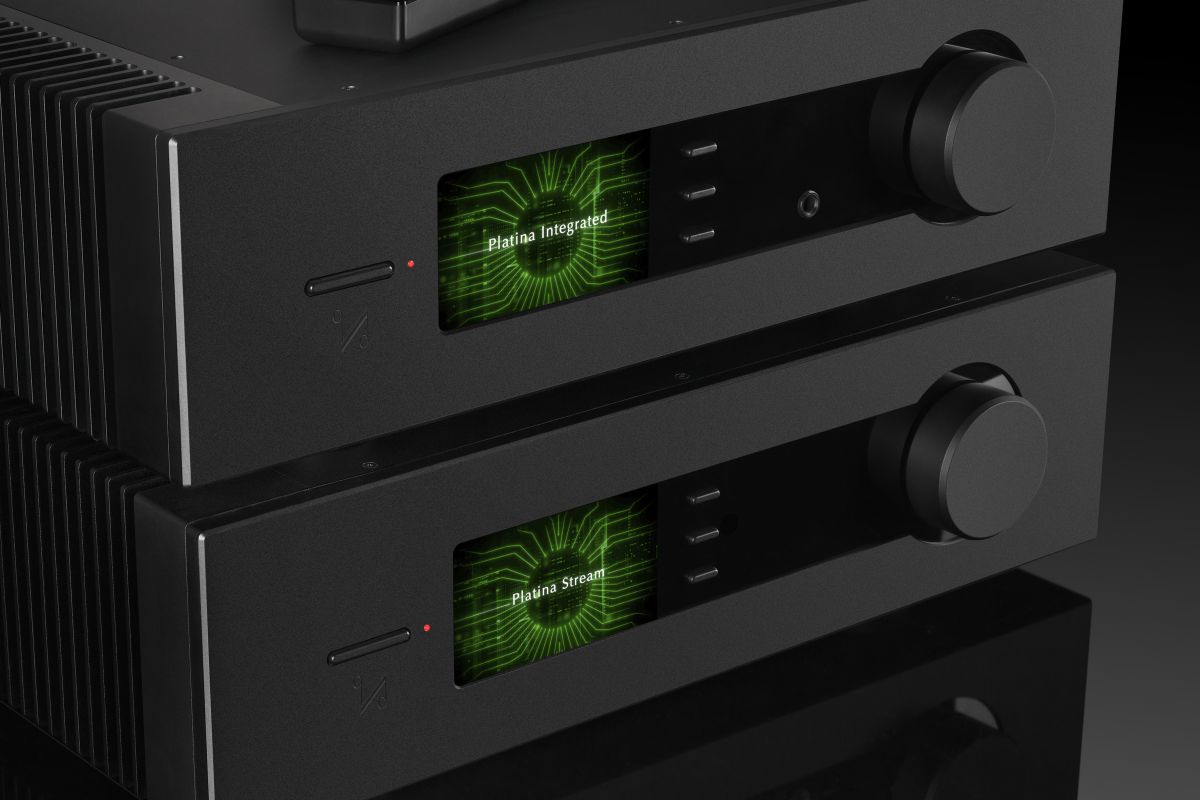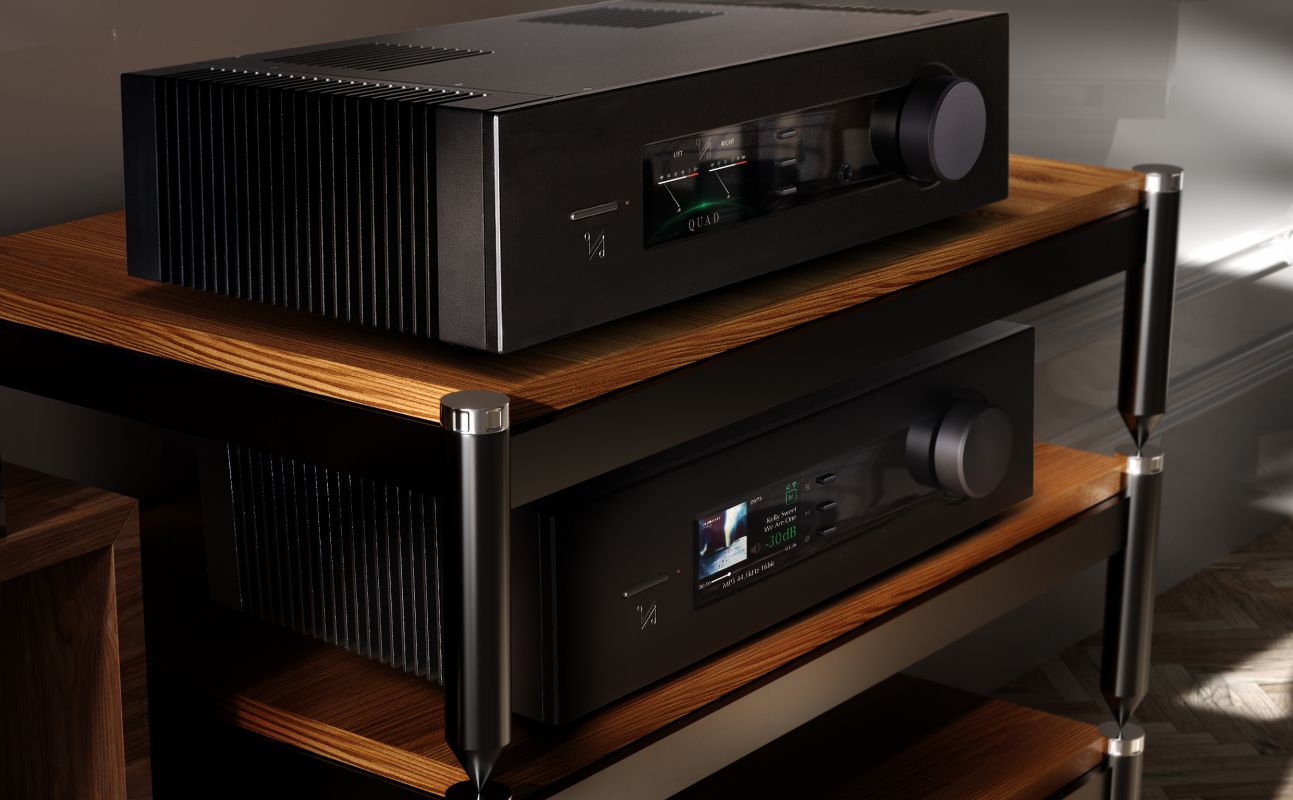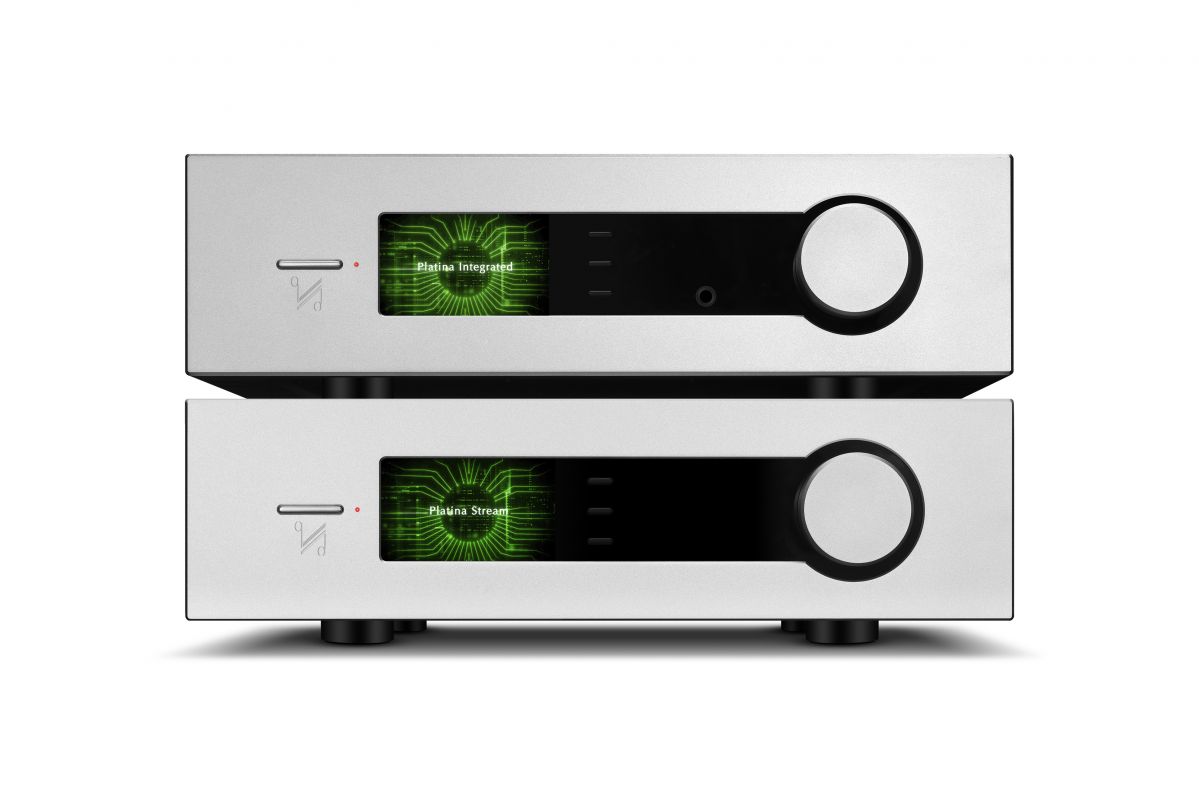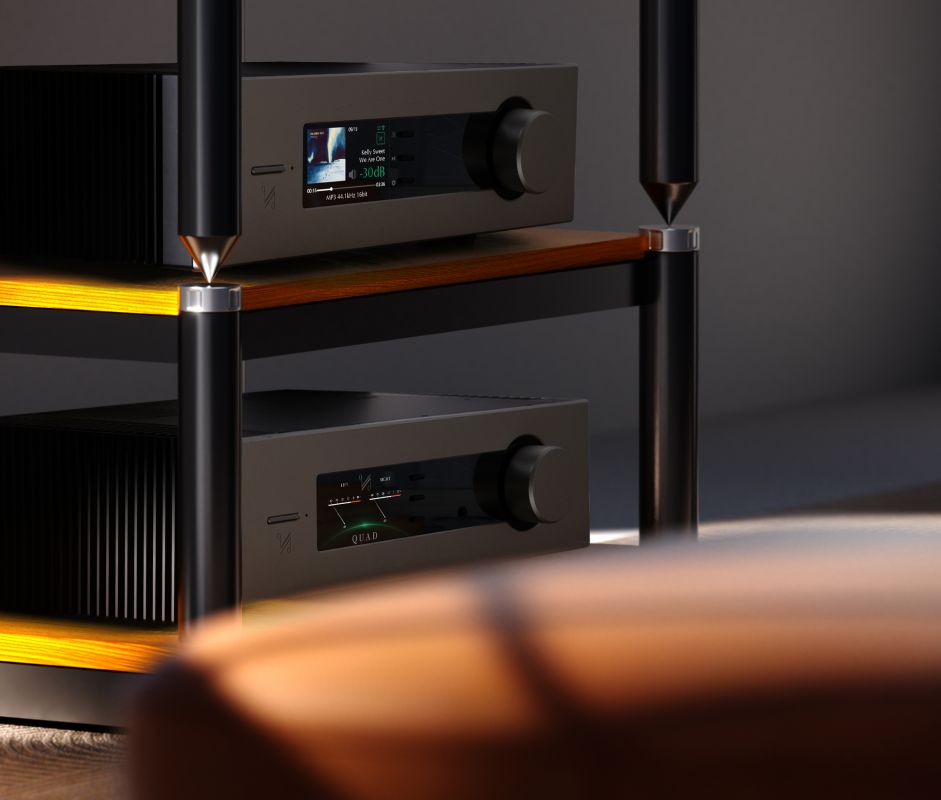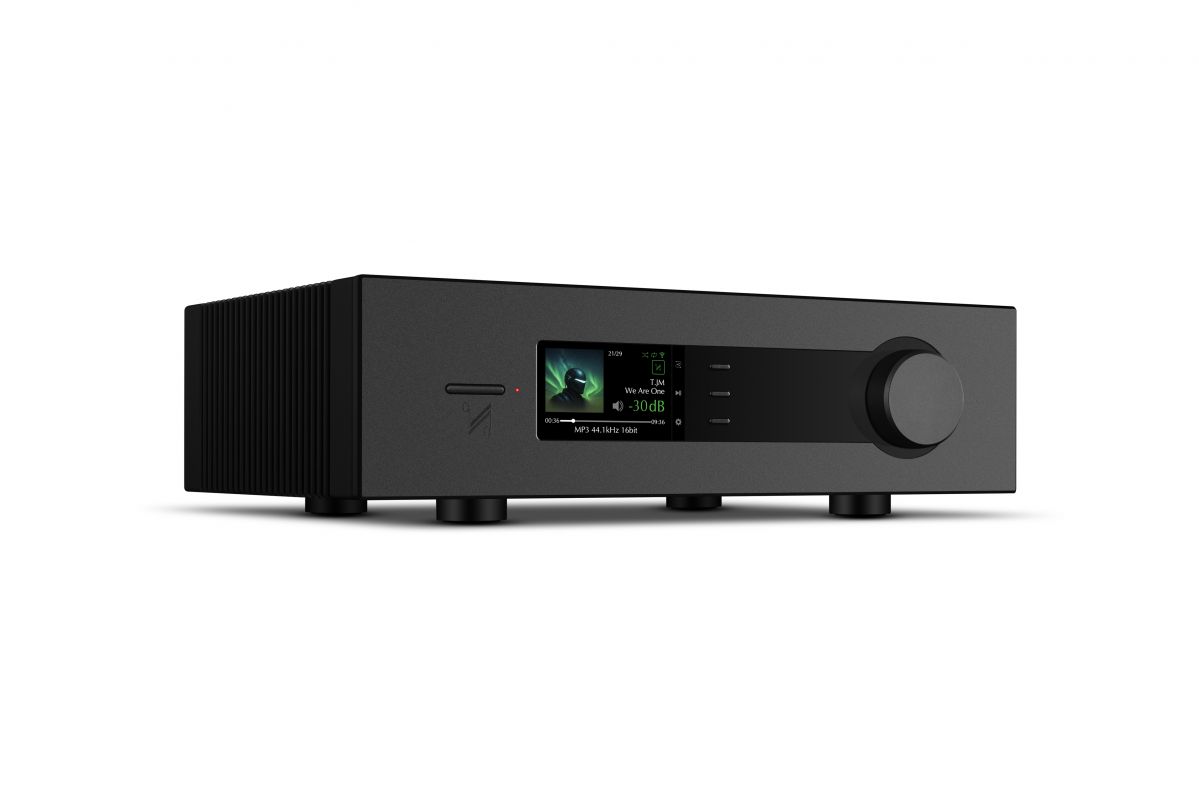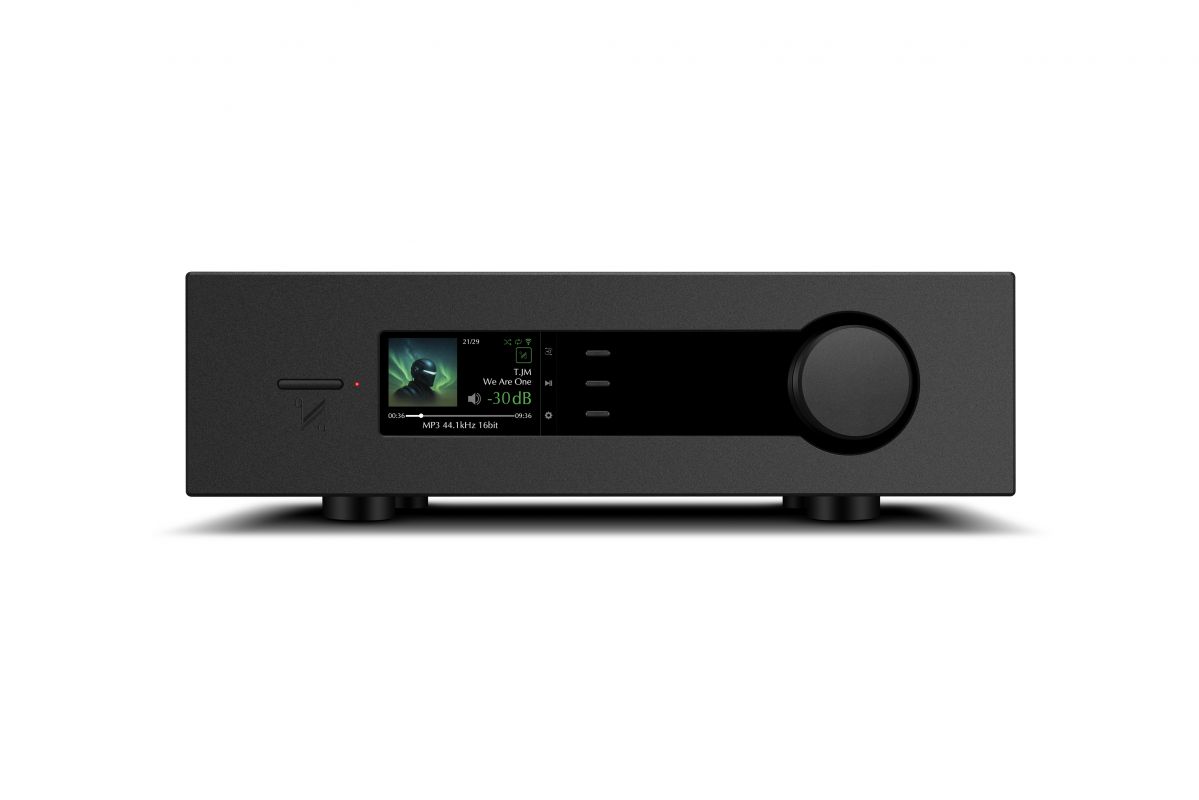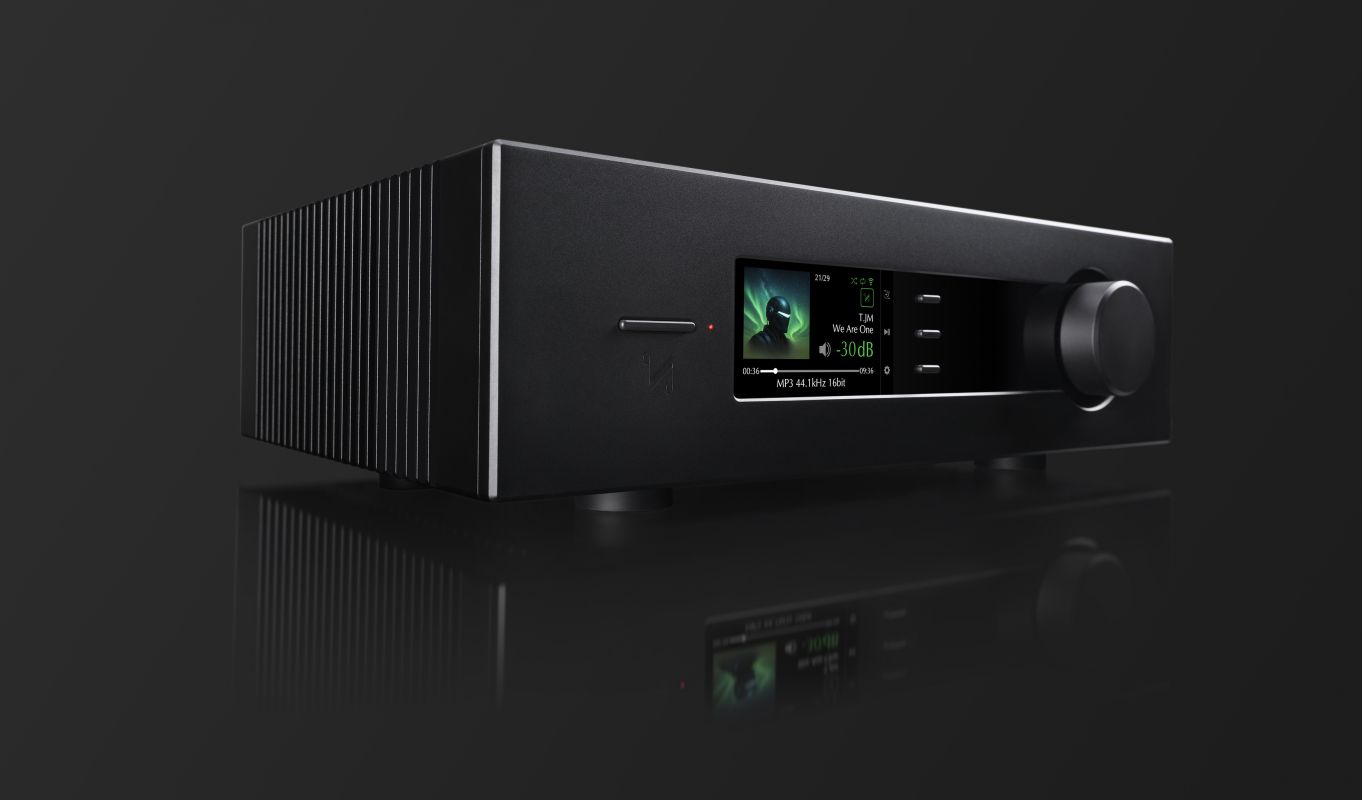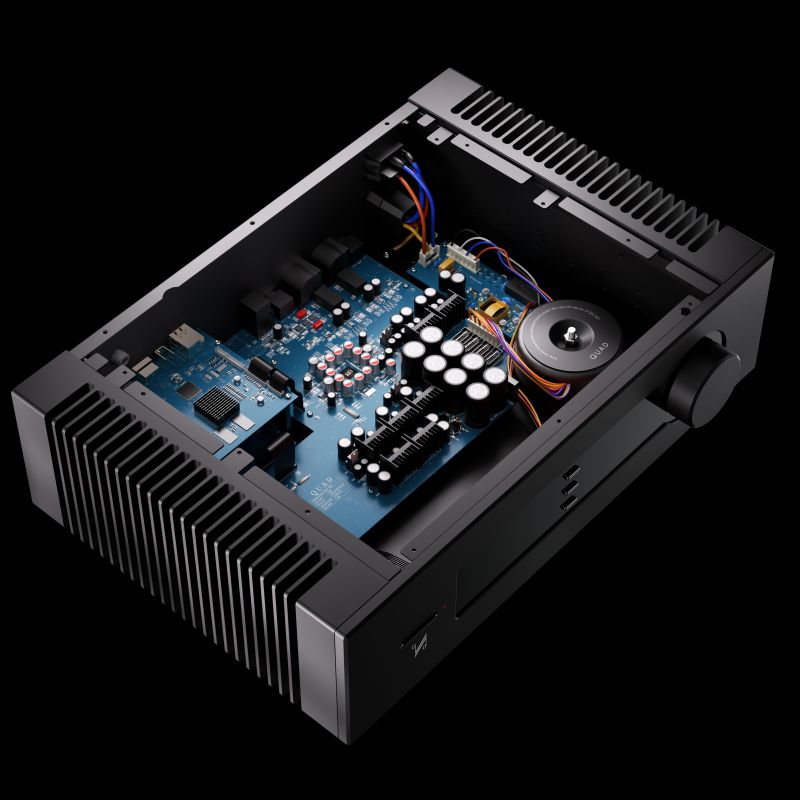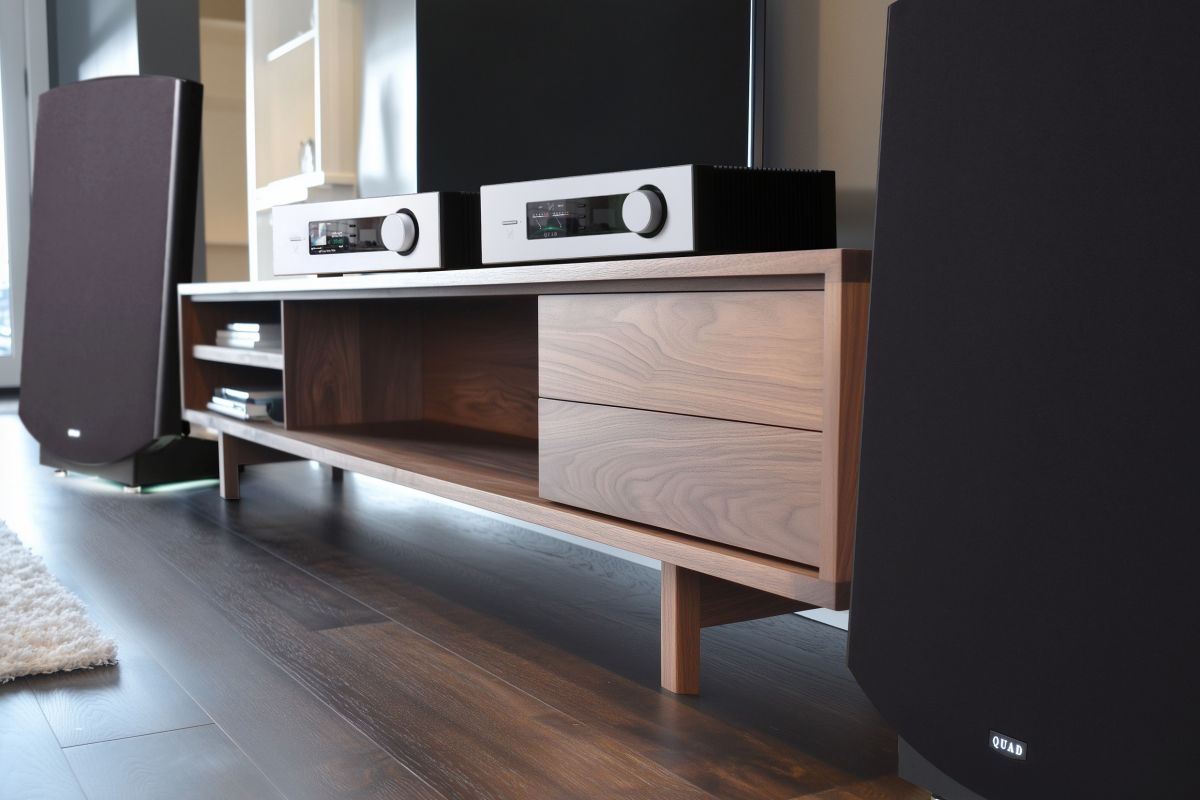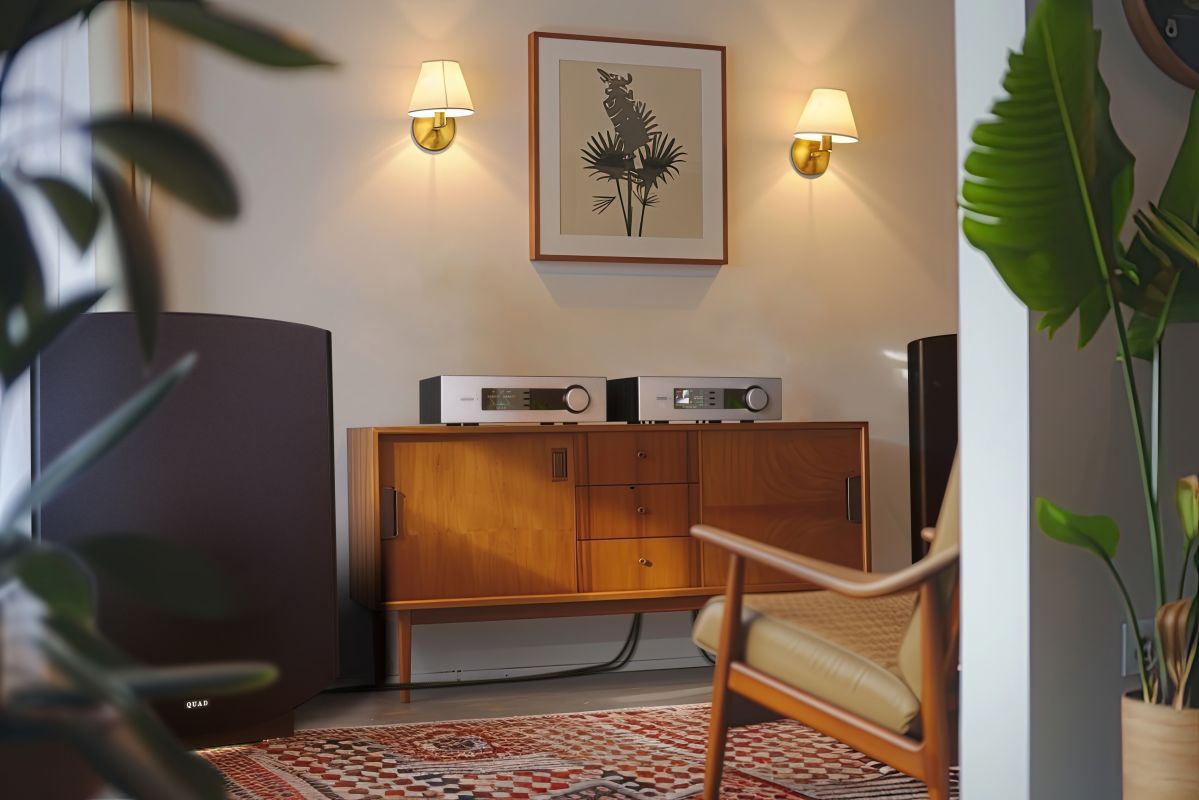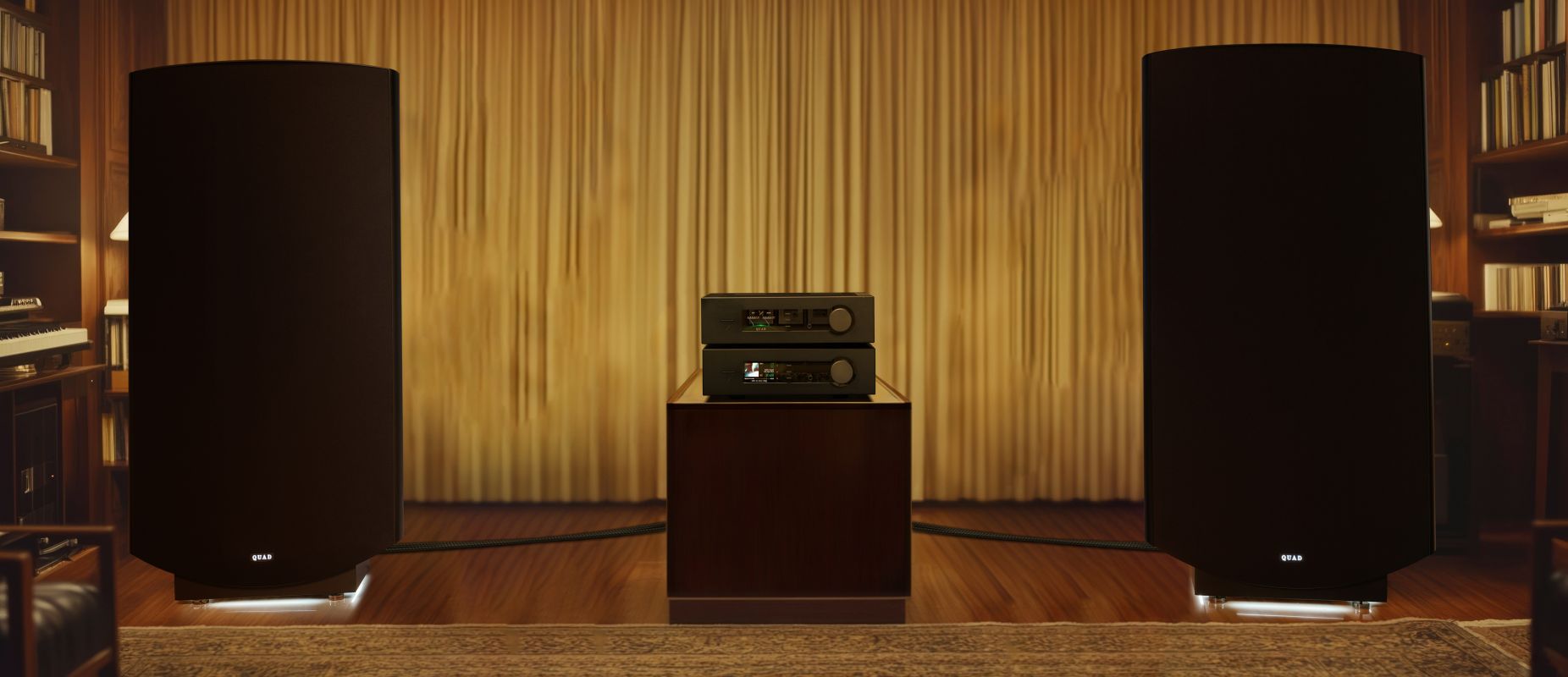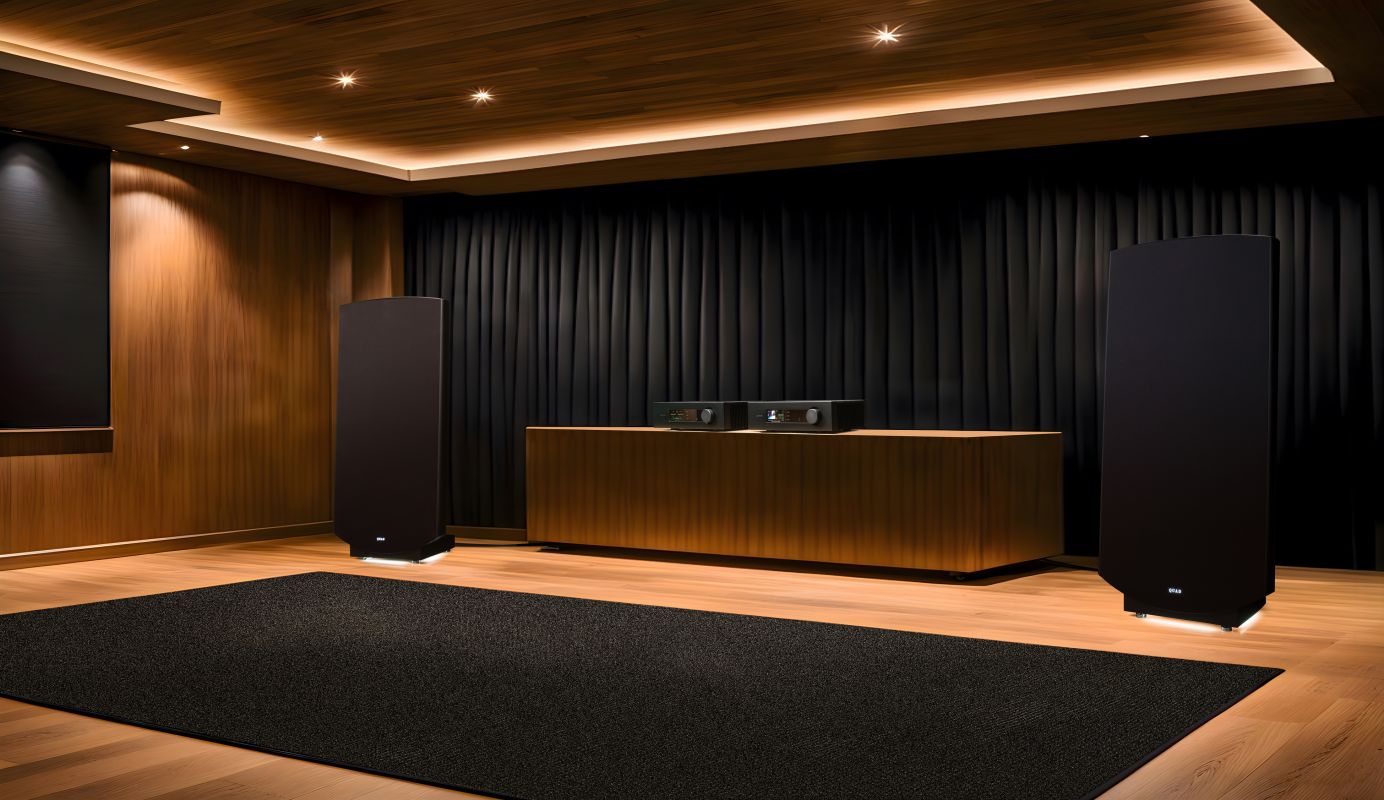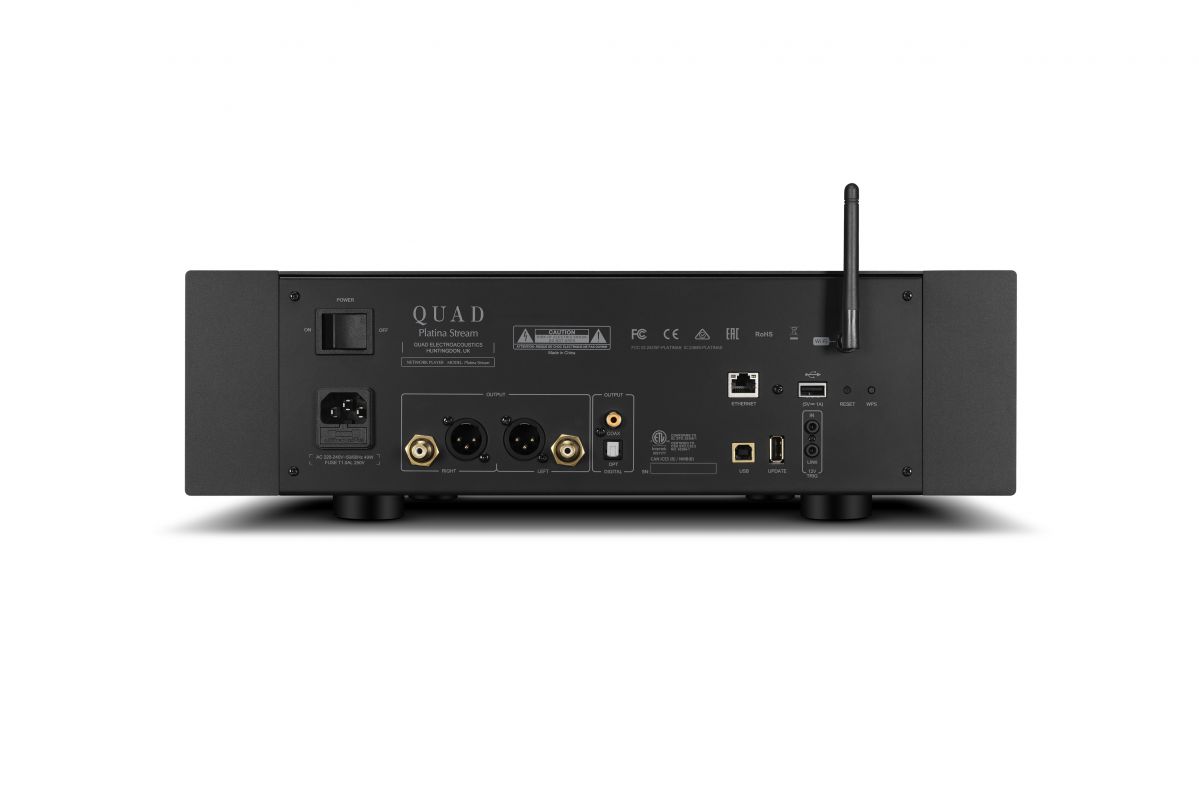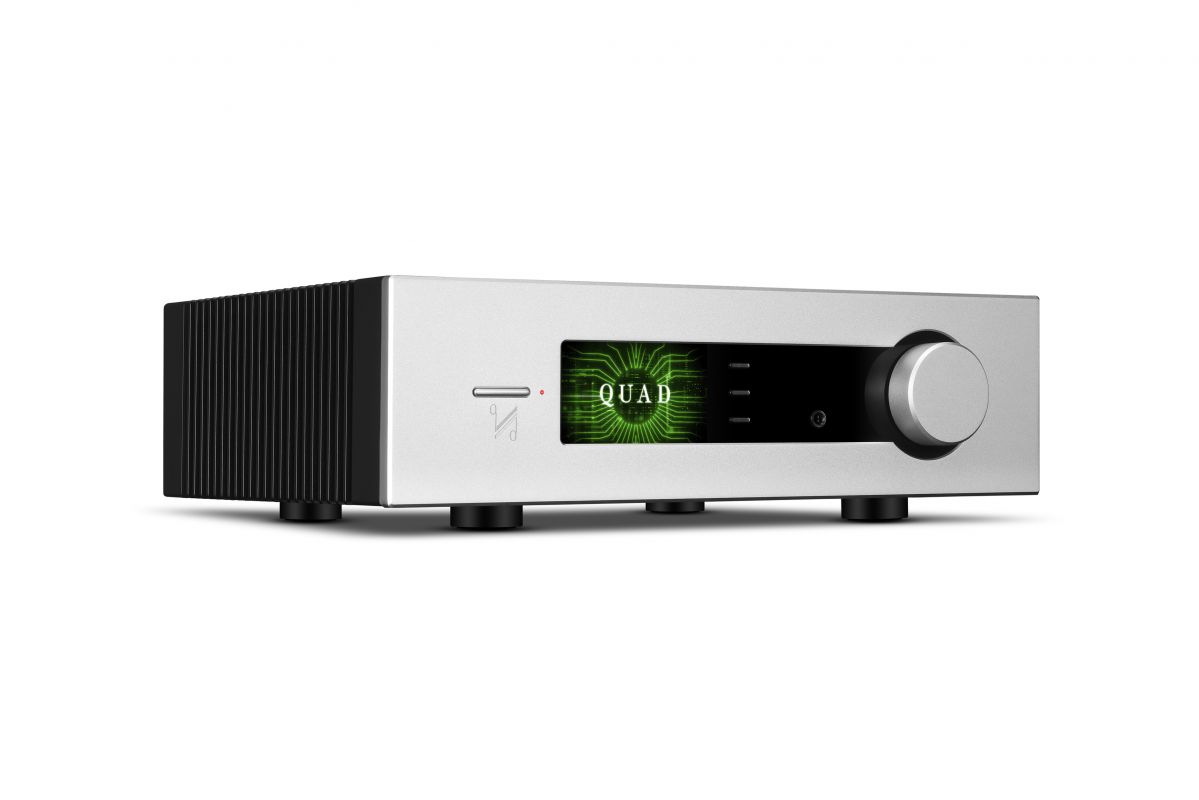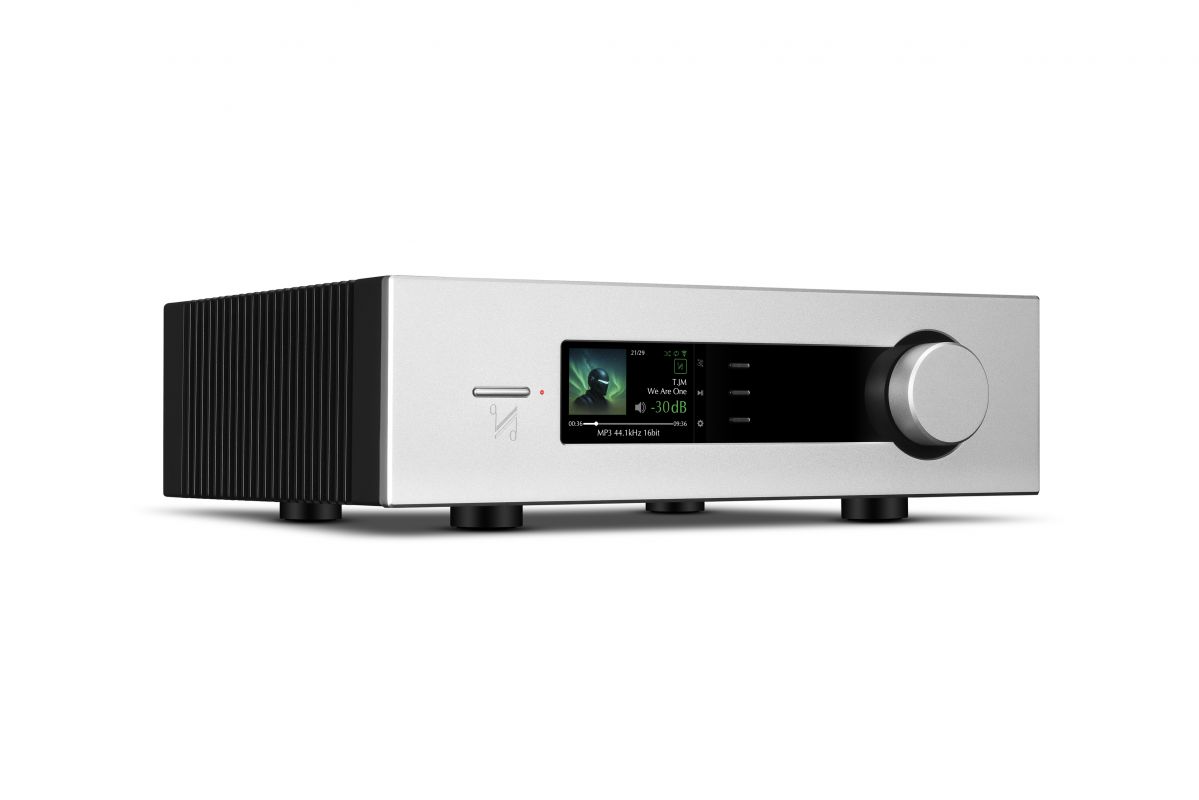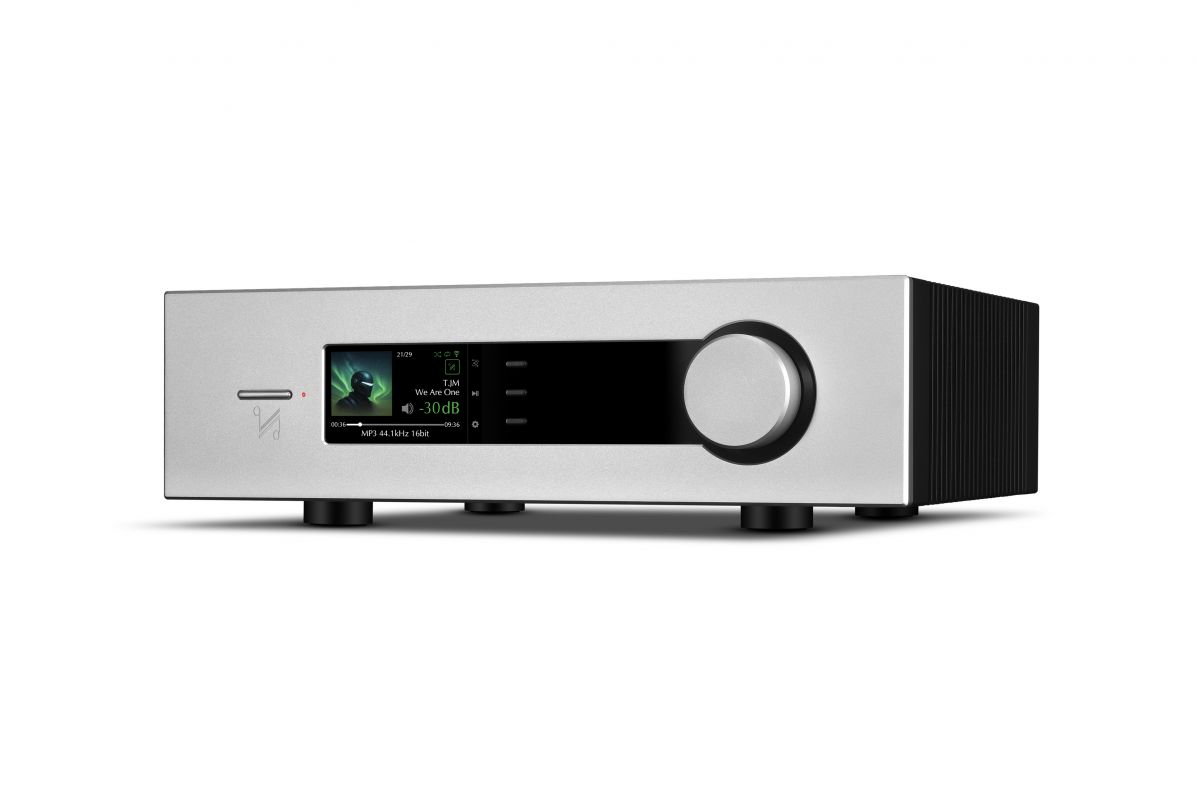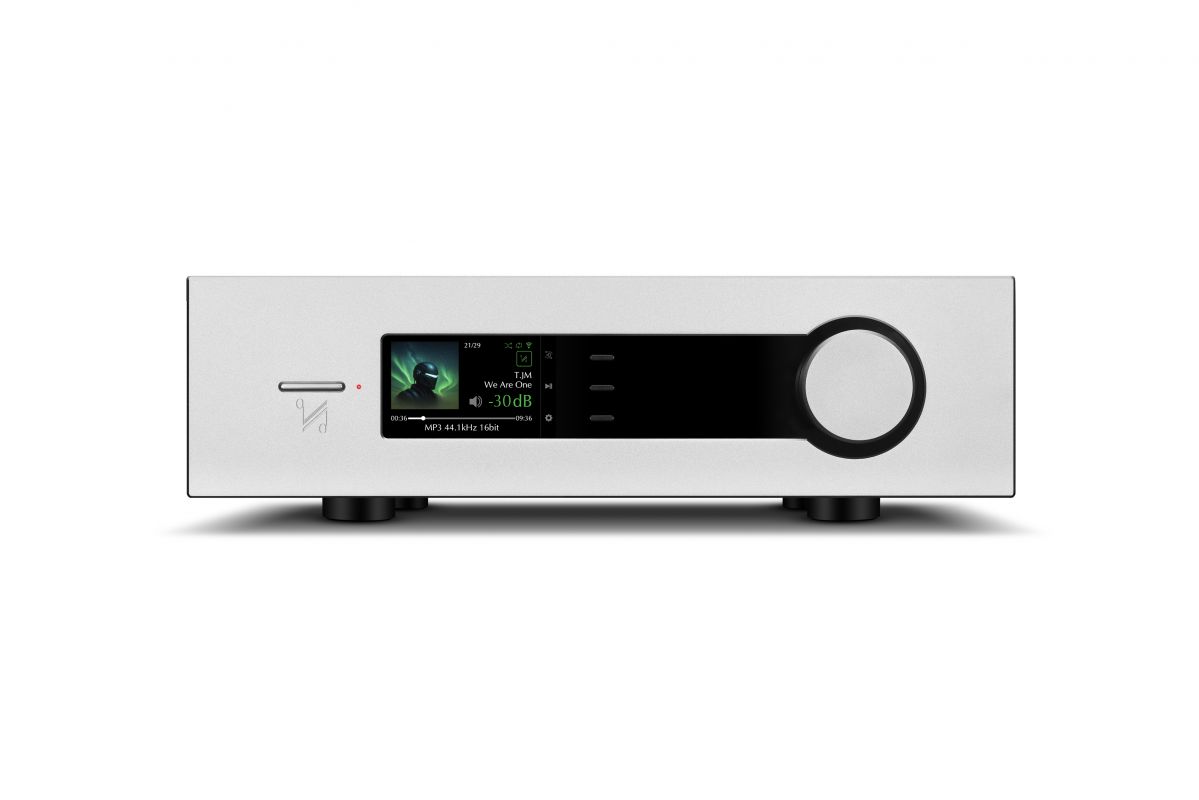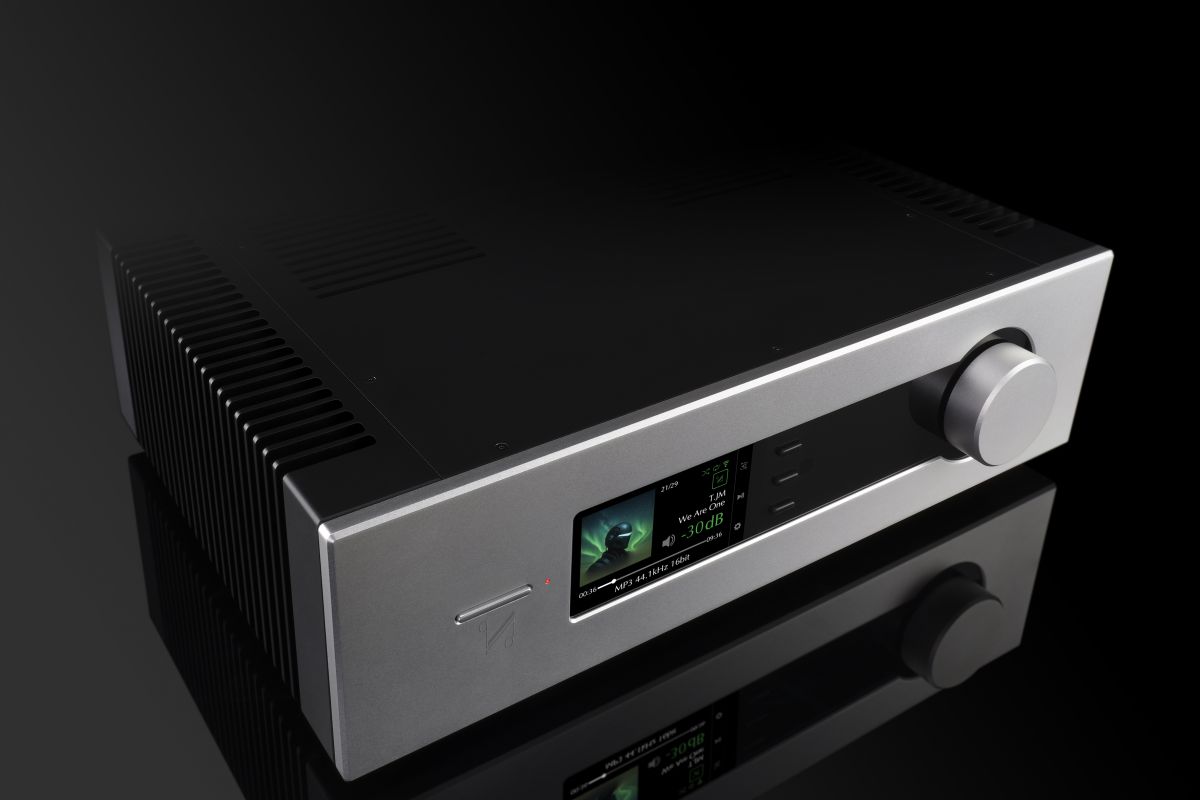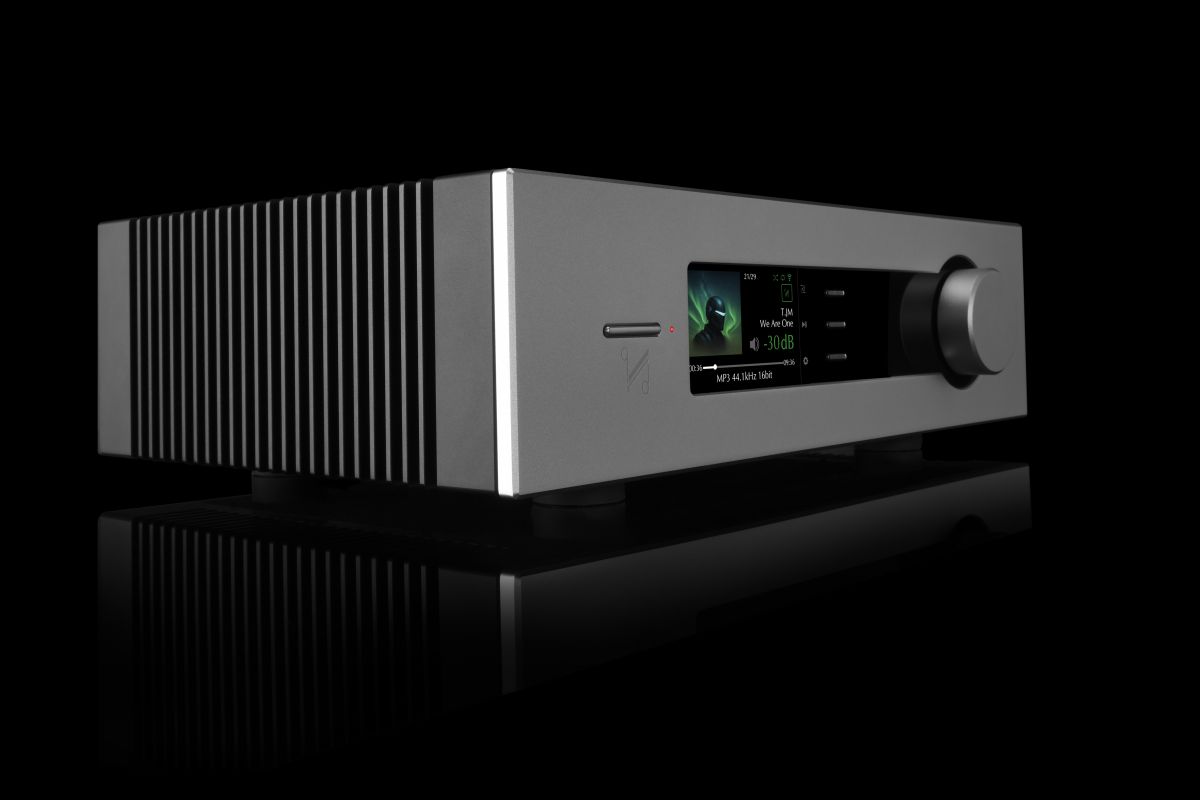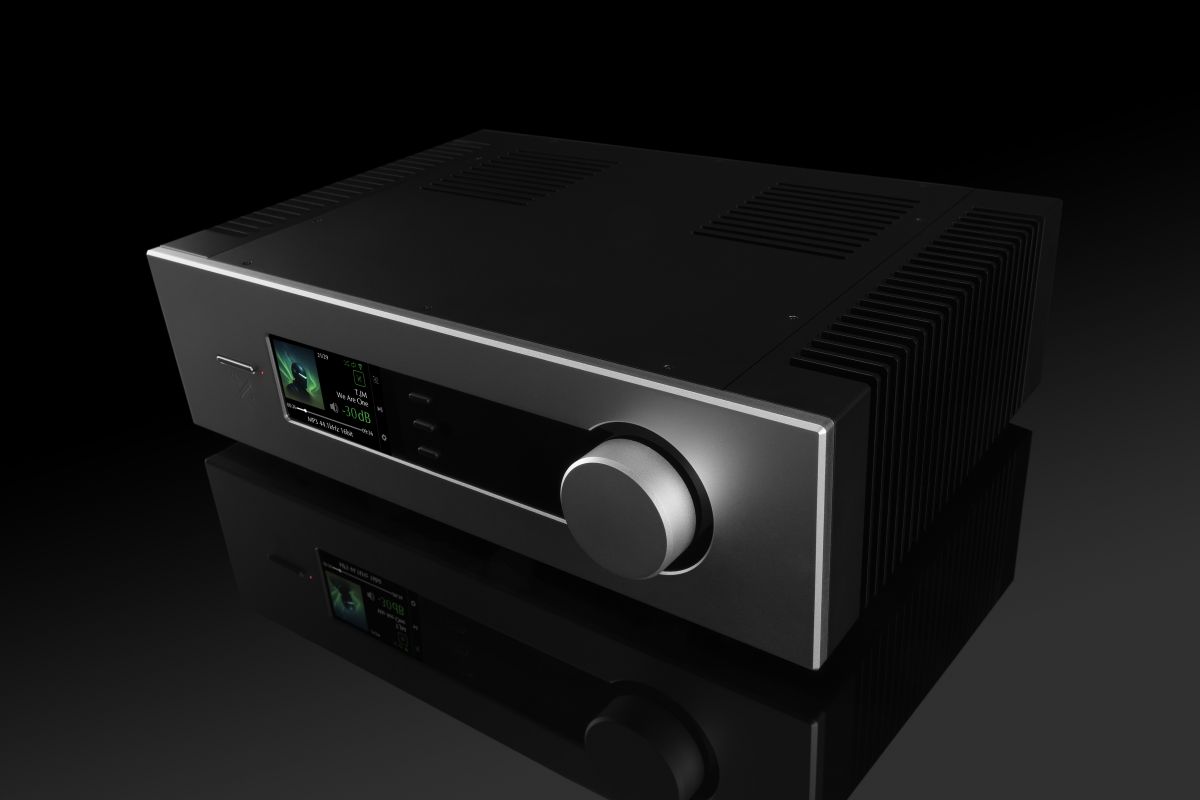QUAD has introduced a high-end streamer in its lineup. The Platina Stream network player joins the Platina Integrated amplifier at the launch of QUAD’s new Platina Series – the finest range of solid-state audio electronics the company has ever produced.
The Platina Stream is a perfect aesthetic match for its amp sibling. It shares the same steel chassis and thick aluminium front panel, with side-mounted heat sinks and anti-resonance feet, providing a reassuring sturdy feel.
It also sports the same elegant fascia, adorned by a subtle trio of function buttons, a power button, a rotary control and a 4.3in colour display.
The network player is a splendid match for the Platina Integrated sonically too, although it is not solely designed to be paired with this amp. It contains its own DAC stage, which means it can be used with any amplifier from any brand whether the amp has digital inputs or not. Connecting to a home network via Gigabit Ethernet or dual-band Wi-Fi, the Platina Stream blends QUAD’s hi-fi heritage with a state-of-the-art digital core.
The Platina Stream’s circuitry is based on a top-tier streaming engine built to deliver sonic excellence by a technology partner selected by QUAD. It utilises a powerful, highly efficient ARM processor and Linux-based operating system, delivering fast, reliable network performance for uninterrupted, bit-perfect playback.
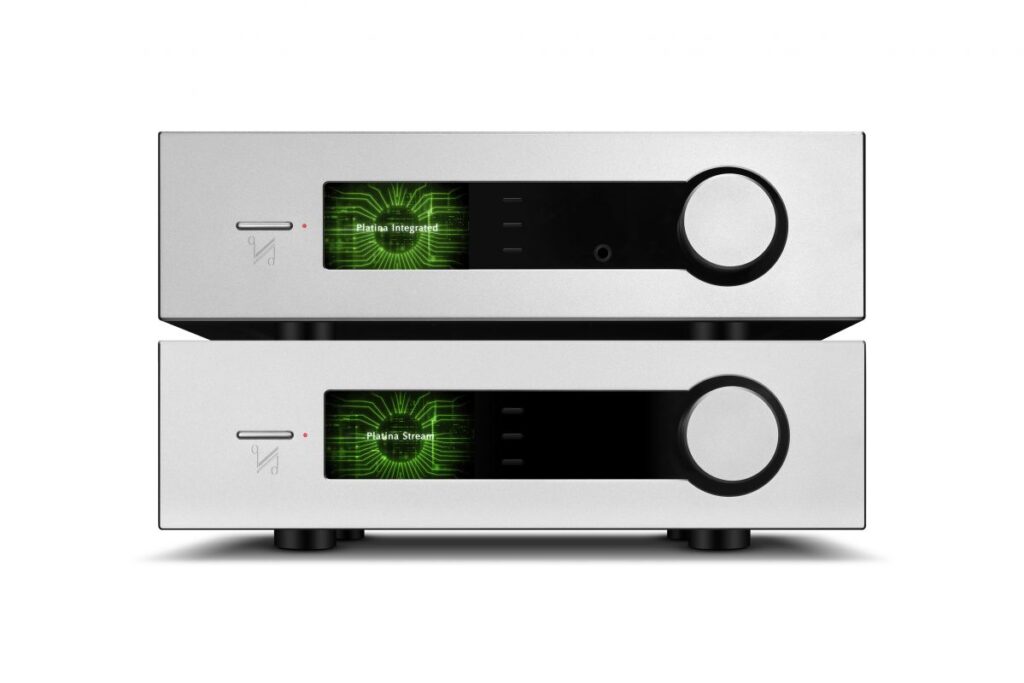
The way streamed audio data is handled, latency eliminated and sonically deleterious noise eradicated by this streaming technology all contribute to the clarity and transparency with which music is conveyed. QUAD has designed its own digital and analogue circuitry to make the most of this sonic potential, working closely with its technology partner to ensure every element knits seamlessly together.
The Platina Stream’s dedicated control app provides quick, easy access to integrated services such as Tidal, Qobuz, Spotify and TuneIn Radio, with an intuitive yet feature-rich interface that makes browsing a breeze. Intelligent search functions and the ability to create multi-source playlists, group albums and organise folders allow users to discover, sort and play their music however they prefer.
Acting as a versatile ‘command centre’ for both local and cloud-based music libraries, the app’s logical hierarchy and fluid gesture control ensure the experience feels as considered as the hardware itself. An indexer works in the background to catalogue network shares, USB drives and streaming services as a single, unified library – simply type a song title, performer, composer, label, year or even a genre and the app returns precise results ranked by relevance.
With user-customisable functions and settings, the Platina Stream app offers the ability to build an on-the-fly playlist and save it permanently with a single gesture. The user can create playlists or folders to keep expansive catalogues organised and even collate multi-disc boxsets, remasters or themed compilations into a single location for uncluttered browsing.
Long-press on any track, album, or artist and a context menu appears: ‘add to playlist’, ‘queue next’, ‘play now’, ‘replace queue’ and more. Unlike many apps for network streaming hardware, the Platina Stream app provides native highlighting of hi-res file types in Qobuz and Tidal, with icons to indicate their provenance. So, users always know what format they are listening to and whether they are accessing the highest quality stream available.
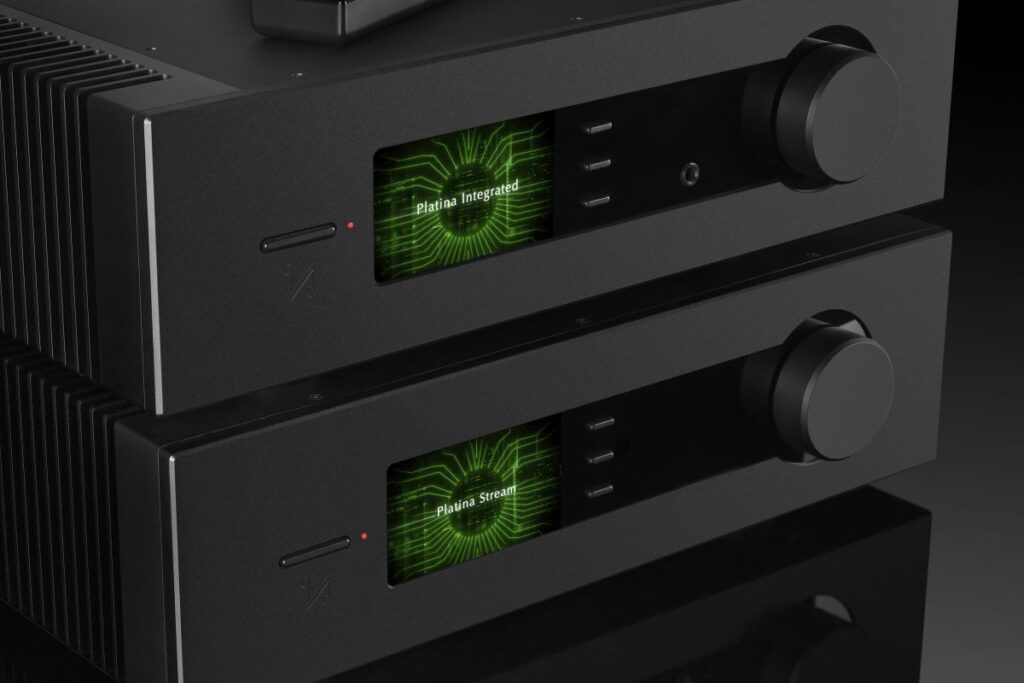
Further functionality will be added to the Platina Stream and its app over time via software/firmware updates. Spotify Lossless support was activated on 22 October 2025 and is available via an over-the-air update for units shipped prior to this date. More updates are in the pipeline as the Platina streaming engine continues to evolve, with a focus on the features most relevant for a high-end network player.
QUAD’s companion app is not the only way to control the Platina Stream. Qobuz Connect, Tidal Connect and Spotify Connect are all supported, allowing users to stream files directly from these platforms at full quality over their network, controlled by the service’s app on their smart device.
The Platina Stream is also certified Roon Ready, with RAAT (Roon Advanced Audio Transport) protocol built in. This ensures it works seamlessly as an endpoint in a Roon-connected audio environment, controlled by the Roon app – the software of choice for many audiophiles building high-performance integrated digital music systems in their homes.
Media streaming service Plex is another string to the Platina Stream’s bow. In this context, Plex can be considered an alternative to Roon – a platform to store, manage and play digital music, using Plex Media Server software on a PC, Mac or NAS drive alongside the music-focused Plexamp app. Both Plex and Roon are considered leaders in their field, each with its own specific advantages; Plex is lauded for its flexibility and lower cost – the software itself is free, with an optional ‘Plex Pass’ subscription unlocking additional features.
While premium-level network streamers often include integrated Roon support, Plex is less common. However, millions of music lovers, movie watchers and TV viewers around the world use Plex to manage all manner of media across their devices.
AirPlay 2 is included, giving another way to stream over Wi-Fi to QUAD’s new network player when using Apple devices as the source. An input is supplied for local USB storage devices and because the Platina Stream is fully UPnP compliant it connects seamlessly with other UPnP devices on a home network – NAS drives, for example – with the option to control the streamer via third-party UPnP apps.
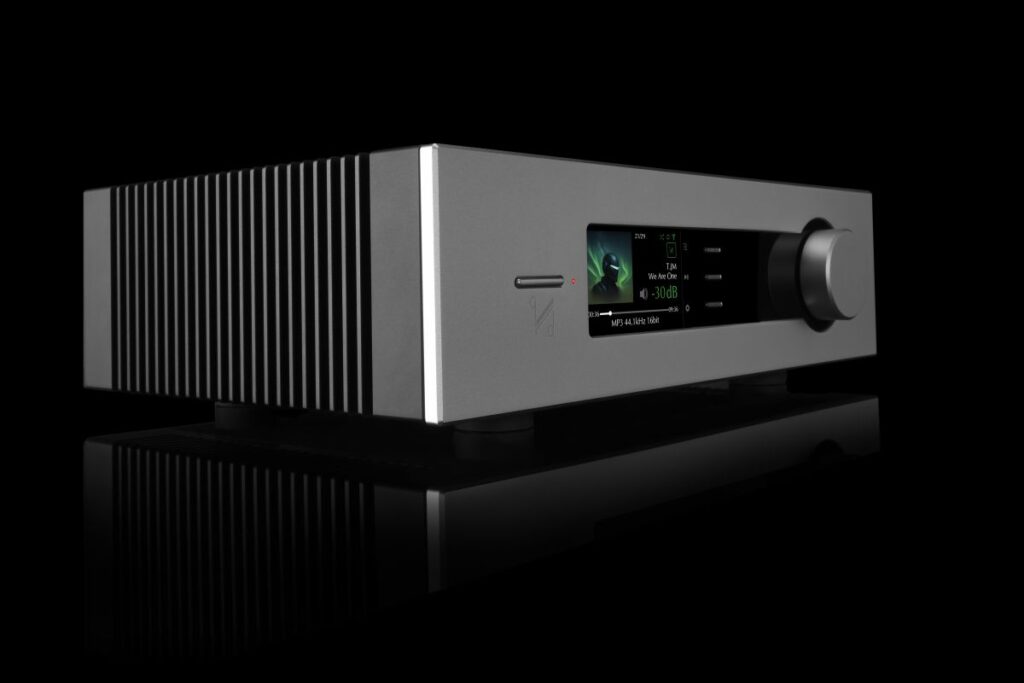
From its dedicated app to the technologies, platforms and streaming services it supports, the Platina Stream is built for passionate music lovers seeking a premium-quality streaming experience. It boasts a quad-core Arm Cortex-A53 chip running at 1.8 GHz per core for fast library handling, album-art caching and rock-solid playback control.
The Platina Stream’s onboard DAC stage mirrors that of the matching Platina Integrated amplifier, built around the ES9038PRO – a preeminent DAC chip from the top ‘PRO’ tier of ESS Technology’s current Sabre range. The DAC’s eight audio channels are fully utilised to deliver a balanced differential stereo signal, eradicating noise and distortion alongside proprietary QUAD circuitry including dual ultra-precision master clocks.
Sabre DAC chips must be implemented with care to extract their full sonic potential. The post-DAC active filter is a critical element – QUAD has incorporated a Class A circuit that is perfectly tailored to make the most of the ES9038PRO’s exceptional signal-to-noise performance and dynamic range.
The Platina Stream benefits from an expertly engineered linear power supply incorporating a 50VA toroidal transformer, delivering clean, consistent power to all the sensitive parts of the digital and analogue stages. The DAC stage has its own dedicated supply, featuring multiple discrete ultra-low-noise regulators to provide power separately to the left and right channels for each stage of the digital-to-analogue conversion process – a critical contributor to the Platina Stream’s sonic performance.
The post-DAC analogue circuitry incorporates top-grade components and features a balanced topology, designed to eliminate noise and distortion in the signal path. This feeds the XLR outputs directly, enabling anyone connecting the Platina Stream to an amp with balanced analogue inputs – the Platina Integrated, for example – to reap the full sonic benefits.
Whether streaming from local storage or online services, the Platina Stream offers superlative performance across even the most diverse digital music collections. Its rear panel sports a well-appointed array of connection options: a Wi-Fi antenna and Ethernet port handle network connectivity, while USB-B and USB-A ports permit asynchronous PC/Mac connection and USB storage input respectively – so, the Platina Stream can perform as a USB DAC as well as a network player.
Analogue outputs are provided in both single-ended RCA and balanced XLR form, with fixed and variable output options – the latter engages the Platina Stream’s volume control, performing preamp duties for direct connection to a power amplifier or active speakers.
S/PDIF digital outputs are included in coaxial and optical options, enabling the streamer to be connected to an external DAC. A USB update port, 12V trigger connections and a WPS button for easy Wi-Fi set-up are also supplied at the rear.
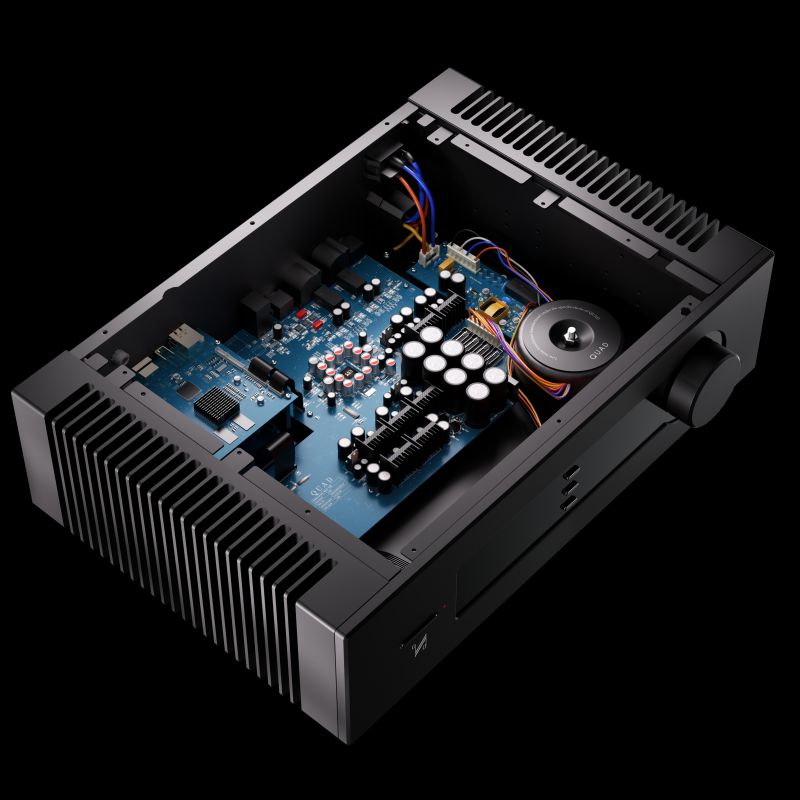
Hi-res audio support is state-of-the-art, handling PCM up to 32-bit/768kHz and native DSD up to 22.5MHz (DSD512) no matter how one streams to the Platina Stream – Wi-Fi, Ethernet cable or USB. Every significant hi-res and lossless audio format is catered for, including FLAC, Apple Lossless (ALAC), WAV and AIFF, alongside native DSD in DSF and DIFF form, as well as DoP (DSD over PCM).
Lower quality audio streams are upsampled to 352.8kHz/384kHz, or users can instead apply one of five DAC reconstruction filters to tune the sound from digital sources – especially useful given the variable quality of audio formats and streaming services.
The display is augmented by a 4.3in full colour IPS LCD display and wealth of data is available to the listener, including the presently engaged streaming service, playlist position, network type, file format, bit depth/sample rate, artist name, album and track title, time
elapsed/remaining and volume level, with various options to select which information is displayed and how it appears on screen.
The display is also the gateway to the Platina Stream’s menu system, providing numerous options including the digital upsampling and filter settings, fixed or variable analogue output, left/right channel balance, time idle before entering standby, volume curtailment upon powerup and Wi-Fi diagnostic data.
Like the Platina Integrated, the screen can be set to display a VU-style meter showing real-time signal levels for the left and right channels, while those who prefer their displays to be simple and unintrusive can turn animations off, adjust brightness or switch it off entirely if preferred.
When the two Platina components are paired together, this creates a system with two separate DACs. By utilising the balanced XLR analogue connections between the network player and the amp, the digital inputs on both components are kept free, combining to provide USB-C, USB-B, USB-A, HDMI ARC and four S/PDIF inputs, in addition to the amp’s RCA analogue inputs.
The QUAD Platina Stream network player launches alongside the Platina Integrated amplifier, with both available from November. It comes with a choice of silver or black front panel, at an RRP of £2,999.


